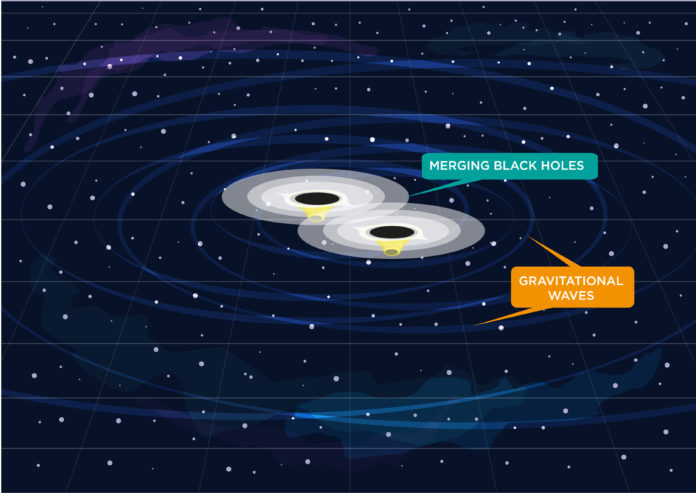When Einstein proposed the existence of black holes, he probably did not think they existed. His ideas became accepted and proven over the years and now more than half a century later, are still being augmented.
The Standard Model proposes that the universe is made up of particles and dark matter all held together by different forces. One of the components of the model are the black holes.
Scientists have not yet been able to comprehend these invisible, strange part of the galaxy but here are a few things they do know about the black holes. Black holes are massive bodies that literally ‘suck’ the mass out of matter that gets too close to them. These bodies are so vast that they take up a de facto eighty-five percent of all matter in the universe. Each black hole has a strong gravitational pull such that if two of them collide, gravitational waves are released. The existence of these waves was confirmed in 2016.
Another way gravitational waves may be produced is through superradiance. How does that work?
Because a black hole has a gravitational pull, it follows that any rotating black hole is surrounded by particles. Black holes release energy to their vacuum fields, and if any particles get close, they are multiplied. The same goes for axions. An axion is a hypothetical particle (considered so because no one has ever seen it) a quintillion times smaller than an electron that makes up dark matter. If an axion enters a black hole’s inner field, it is multiplied by 1080, producing more particles than all the atoms in the universe.
The axions released by the superradiance process compound together to form a cloud. According to the researchers who came up with the theory, such a cloud would have forty-five times the mass of our sun. This mass may seem large to us but is inconsequential when compared with that of a black hole.
Researchers from the Perimeter Institute of Theoretical Physics postulate that the mass of these clouds could factor in finally understanding dark matter. As axions move and collide within the cloud, they form gravitons, which are similar to groups of gravitational energy. The gravitons’ waves can then be detected to provide a gravitational signal for the axions.
The leaders of the research project Dr. Masha Baryakhtar and Asimina Arvanitaki say that they could detect the waves if they modified their detector, called LIGO, to do so. Each time a graviton is created within an axion cloud, the team would receive a signal in the form of gravitational waves. Over time, physicists could be able to map the shape of the axion clouds surrounding black holes. Finally ‘seeing’ the axions would bring scientists one step closer to completing the filling in the missing pieces of the Standard Model.
The only detractor to what the scientific community is calling a ‘promising’ and ‘awesome’ theory is that it relies on the axion clouds having a very particular mass, otherwise their signals may be mistaken for other particles’ signals.
The theory was published in the Physical Review D.




